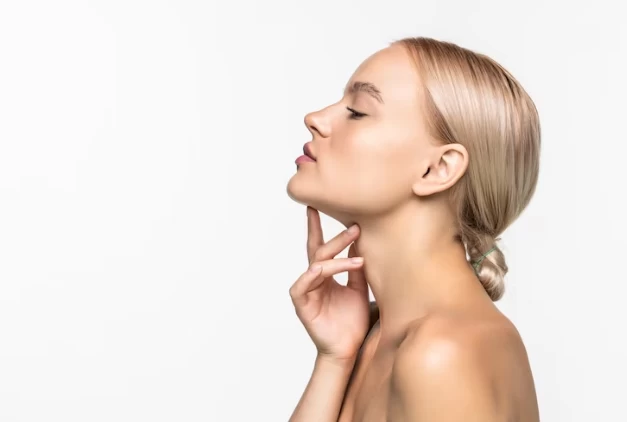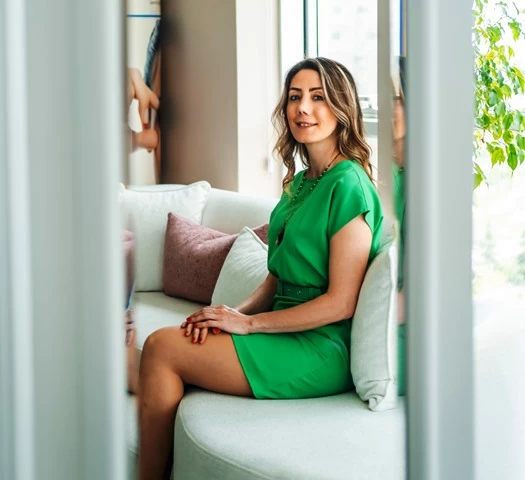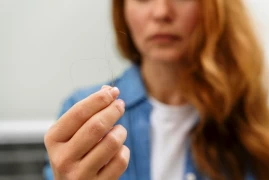
New Approach in Skin Rejuvenation: Allogeneic Fibroblast Applications
- New Approach in Skin Rejuvenation: Allogeneic Fibroblast Applications
- What is Allogeneic Fibroblast?
- What are the Primary Objectives of Allogeneic Fibroblast Applications?
- How is Allogeneic Fibroblast Applied?
Allogeneic fibroblast applications are an innovative treatment method used in medical and cosmetic fields. Fibroblasts are cells that make up the main connective tissue in the skin and play a significant role in maintaining the skin's tightness, elasticity, and youthful appearance.
What is Allogeneic Fibroblast?
Allogeneic fibroblasts are fibroblast cells taken from one organism and injected into another organism. Fibroblasts are the main connective tissue cells found in the body and are responsible for the structural support of the skin, tendons, ligaments, and other connective tissues. They are also responsible for producing essential proteins such as collagen and elastin, which contribute to the tightness and elasticity of the skin.
Allogeneic fibroblast applications are a treatment method used in medical and cosmetic fields. In this treatment approach, fibroblasts taken from one individual are cultured in laboratory conditions and then injected into another individual. "Allogeneic" refers to tissues and cells taken from a different organism, while "autologous" refers to the use of the patient's own tissues.
It is often preferred when a patient cannot use their own fibroblasts or does not produce an adequate amount of fibroblasts. This treatment method aims to promote skin rejuvenation, reduce wrinkles, diminish skin spots, and improve skin texture. It can also be used to support wound healing.
Allogeneic fibroblast applications should be carried out by professional healthcare experts and customized according to the patient's individual condition. The treatment process is determined based on the patient's needs and skin condition. Therefore, individuals considering such treatments should consult with a specialized dermatologist or plastic surgeon.

What are the Primary Objectives of Allogeneic Fibroblast Applications?
The primary objectives of allogeneic fibroblast applications are as follows:
- Skin Rejuvenation: Allogeneic fibroblast applications are used to slow down the aging process of the skin and achieve a younger, healthier, and more vibrant skin appearance. Fibroblast cells enhance the production of collagen and elastin in the skin, thereby increasing its tightness and elasticity. This can contribute to reducing fine lines, wrinkles, and improving skin texture.
- Wrinkle Treatment: Allogeneic fibroblast applications are particularly preferred to reduce wrinkles on the face, neck, and décolletage areas. Fibroblast cells help correct the appearance of wrinkles on the skin, resulting in smoother skin.
- Reduction of Skin Lesions and Spots: Allogeneic fibroblast applications can assist in reducing skin spots, sun damage, and other skin lesions. Fibroblast cells support the skin's renewal process, helping to regulate skin tone and reduce the appearance of spots.
- Support for Wound Healing: Allogeneic fibroblast applications are used to accelerate wound healing and reduce the appearance of scars. Fibroblast cells support the formation of new tissue in the wound area, facilitating the healing process.
- Skin Texture Correction: Allogeneic fibroblast applications can be used to correct issues such as skin indentations, stretch marks, or surface irregularities. Fibroblast cells support the renewal of skin tissue and the creation of a smoother skin surface.
Allogeneic fibroblast applications are considered an effective option for skin rejuvenation and improvement. However, as with any medical procedure, potential risks and benefits should be carefully evaluated, and the procedure should be performed by a knowledgeable dermatologist.
How is Allogeneic Fibroblast Applied?
Allogeneic fibroblast application is used for various aesthetic and dermatological purposes, including skin rejuvenation, wrinkle reduction, correction of skin lesions, and support for wound healing. This procedure should be performed by a specialized dermatologist or plastic surgeon. The basic steps of allogeneic fibroblast application are as follows:
- Patient Evaluation: Prior to allogeneic fibroblast application, the patient is evaluated. The appropriate treatment plan is determined considering skin type, skin condition, expectations, and medical history.
- Anesthesia: Allogeneic fibroblast application is typically performed under local anesthesia. This ensures that the patient is comfortable and pain-free during the procedure.
- Allogeneic Fibroblast Treatment: During the procedure, fibroblast cells taken from the patient are cultured and prepared in a specialized laboratory environment. These cells are processed in a sterile and safe manner. They are then injected into the skin in the areas that require treatment or applied topically. Injections are administered beneath the skin to allow the fibroblast cells to support skin renewal.
- Healing and Results: After allogeneic fibroblast application, the healing process of the skin begins. The production of new tissue and collagen increases, leading to improved skin tightness and elasticity. Reduction of wrinkles, healing of skin lesions, and improvement in skin texture become more noticeable over time.
- Follow-Up Checks: After allogeneic fibroblast application, patients are scheduled for follow-up checks at specific intervals. During these appointments, the condition of the skin is evaluated, and additional treatments or care recommendations are provided.
Allogeneic fibroblast application is considered an effective and safe method for skin rejuvenation and improvement. However, as with any medical procedure, potential risks and benefits should be carefully evaluated, and the procedure should be carried out by a qualified healthcare professional. It's important for such aesthetic procedures to be performed by an experienced and certified dermatologist.
In conclusion, allogeneic fibroblast applications are regarded as an interesting treatment method in the fields of skin rejuvenation and treatment. However, for more information and consultation on this matter, it is important to reach out to a dermatologist.






